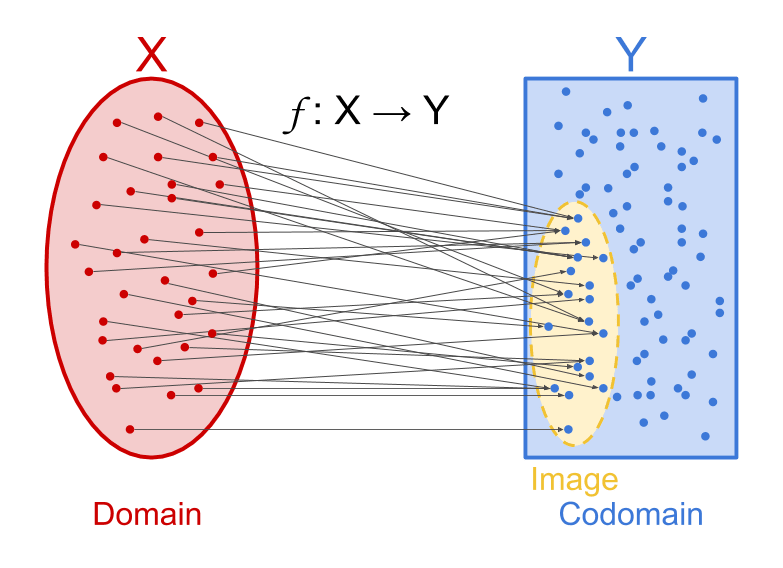The image of a function is the set of all possible outputs of , which is a subset of . Using set builder notation,
Visualizing a function as a map that takes every point in an input set to one point in an output set, the image is the set of all places where -arrows land (pictured as the yellow subset of in the image below).
The image of a function is not to be confused with the codomain, which is the type of output that the function produces. For example, consider the Ackermann function, which is a very fast-growing (and difficult to compute) function. When someone asks what sort of thing the Ackermann function produces, the natural answer is not "something from a sparse and hard-to-calculate set of numbers that I can't tell you off the top of my head"; the natural answer is "it outputs a number." In this case, the codomain is "number", while the image is the sparse and hard-to-calculate subset of numbers. For more on this distinction, see the page on codomain vs image.
